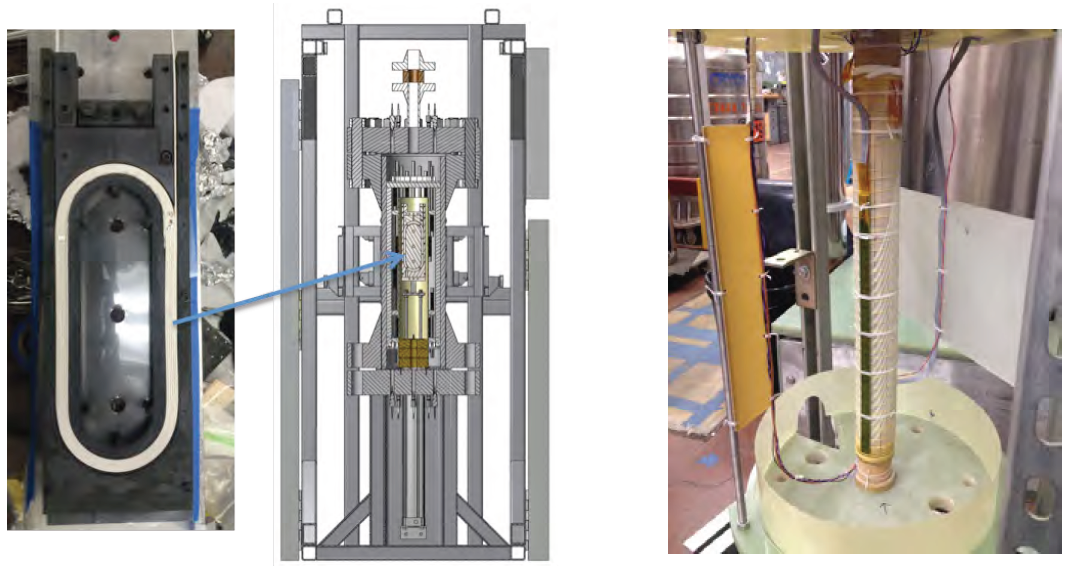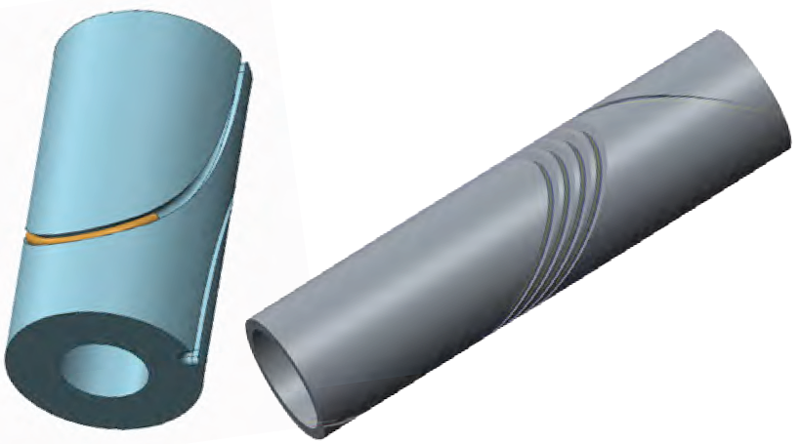This part of the program will develop magnets that have high-temperature-superconductor (HTS) inserts to achieve fields beyond those attainable with Nb3Sn alone, as well as HTS-only stand-alone magnets for special applications.
The HTS program is primarily focused on determining the feasibility of these materials for use in accelerator magnets, but will take a broad, generic approach to development of the technology. The overarching goal is to design and fabricate HTS accelerator magnets that generate record field while maintaining an ongoing vigorous science program. We will study and develop both Bi-2212 and Rare Earth-Barium-Copper Oxide (REBCO) materials and related technologies, working with Small Business Innovation Research/industry and DOE university programs. We will also explore the strong areas of overlap with other DOE Office of Science programs.
 Click for larger version |
Bi-2212 sub-scale magnets to demonstrate HTS dipole technologyWe are using the previously developed “racetrack” R&D platform magnet and the new CCT geometry to explore technology limits to 5 T or greater in a dipole configuration for both stand-alone magnets and high-field inserts. More… Far left: LBNL Bi-2212 racetrack coils in furnace at Florida State University’s National High Magnetic Field Laboratory.Near left: Bi-2212 Canted-Cosine-Theta coil in test fixture. |
|
 Click for larger version |
REBCO-based dipole and quadrupole magnetsThis approach includes the design and test of canted cosine-theta (CCT) dipole magnets using cable-on-round-core (CORC) and stacked-tape conductors, and quadrupole magnets made using racetrack coils. More… Left: YBCO (yttrium barium copper oxide) stacked tape test mandrel. Right: CORC conductor test mandrel. |
 Click for larger version |
||
To Learn More…
Click here to get detailed information on these topics, view a chart of schedules and milestones, and meet the management team for this program element.
